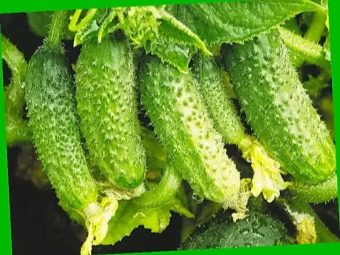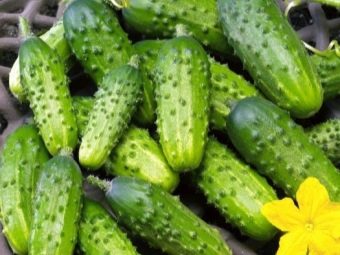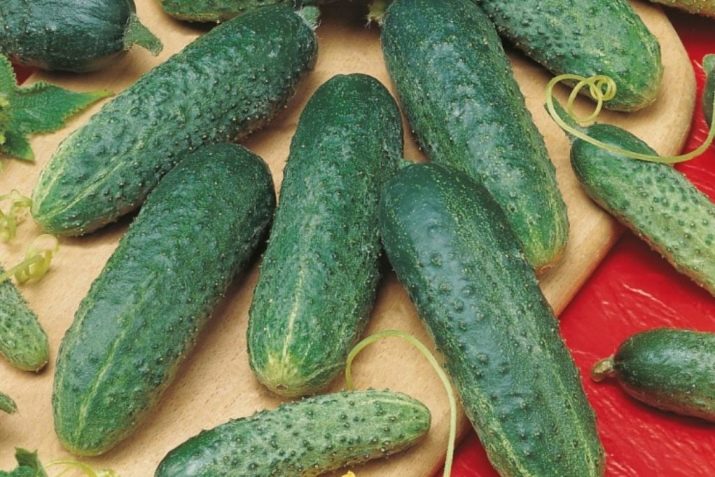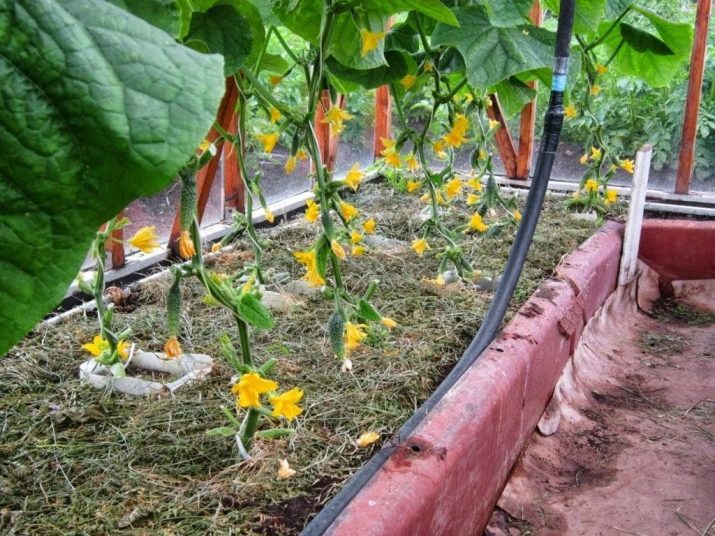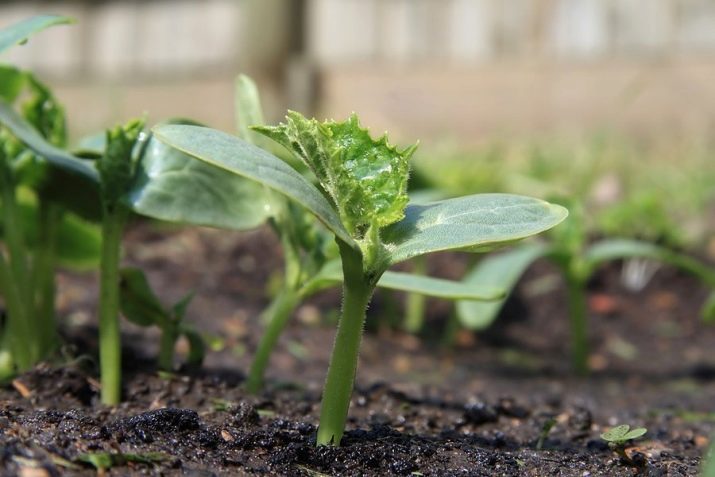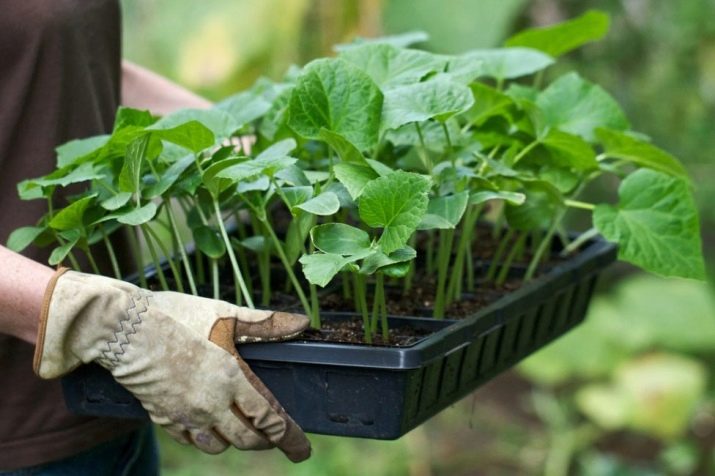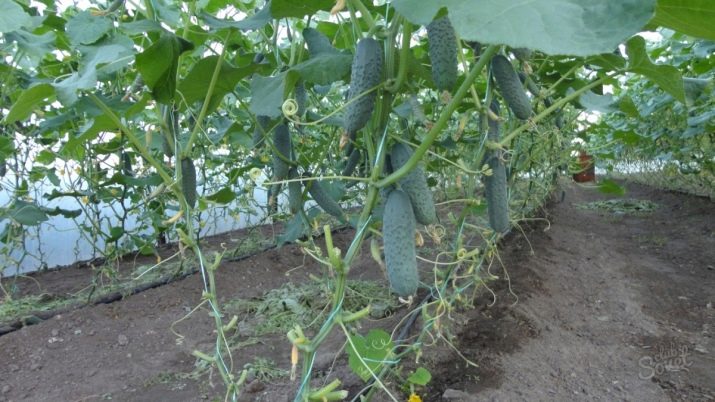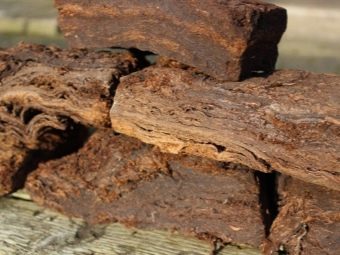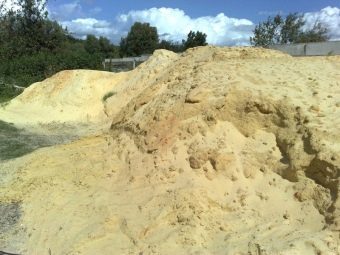Cucumbers "Asterix F1": features of the variety, planting and care
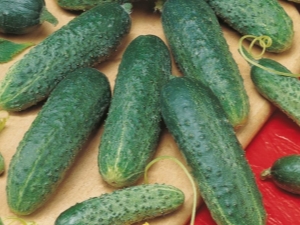
Almost all people like cucumbers, and it is difficult to find a garden where they would not grow. But to navigate in the diversity of modern varieties, even experienced gardeners and farmers is quite difficult.Today we will talk about what Asterix F1 is a cucumber.
Special features
The plant was bred by the Dutch breeding company Bejo Zaden B. V. At the same time, the leading developers of the variety come from Russia, so they know the local conditions personally. The plant must be pollinated by bees. The interval from emergence to the formation of fruit is on average 48-54 days. Other main features of the culture are:
- developed and efficiently absorbing root system;
- average growth of bushes;
- green dark leaves of moderate size;
- fruits with whitish spikes, in shape close to the cylinder.
The weight of the vegetable can reach 70-90 g, while at the same time it grows to 100-120 mm. Minor patches and stripes of white color on the peel are the norm. Depending on the adherence to the principles of agrotechnology, the share of marketable fruits in the entire harvest ranges from 80 to 97%. "Asterix F1" perfectly manifests itself:
- in fresh cutting for salads;
- after salting;
- when rolling in banks.
Characteristics of the hybrid allow him to successfully survive the hot dry periods. Because the plant is recommended for the southern regions of the country. It is also useful that it is very well protected from:
- true and downy mildew;
- cucumber mosaics;
- olive spotting.
Growing information
The official botanical register of the Russian Federation indicates that Asterix F1 is suitable for the center of the European part and for the central Chernozem region. The unique feature of the variety is that it can multiply by budding. As a result, the earliest harvest is grouped on the main stem. Side shoots are much worse developed and almost never mature 100%. Cucumbers of this variety produce a developed and stable fruit, are considered sun-loving, but at the same time the seedlings do not tolerate direct illumination.
It is very important, judging by the reviews, to remove ripe fruit in time. Violation of this rule will lead to complete destruction of the collection, and the growth rate of plants will not allow to get a new crop. Seed shoots appear at the same time. But this requires thoroughly fertilize the site. Seedlings and sowing seeds are equally effective when growing Asterix F1.
Direct seeding
This landing is recommended in mid-May. A good idea would be to choose seeds that have been pretreated with fungicides. If there is no such material, protection needs to be provided with your own hands due to soaking in 1% potassium permanganate solution. After a few minutes of impregnation, the seeds are transferred to clean warm water for about a quarter of an hour, while from all the seeds it is better to choose the largest specimens.
Landing can be carried out after the seeds are completely dry. The ideal auxiliary fertilizer is wet sawdust. If the wells are used, then two seeds are planted in each. The distance between the individual holes - 120 mm. The distance from one bed to another is 0.6 m.
Seedling application
As usual, this solution allows you to achieve the earliest and most delicious harvests - no matter at home, in the garden or in the greenhouse. It is advisable to apply the land mixture, which are prepared personally. It is best to wait for planting temperatures from 21 to 25 degrees. When the early foliage appears, immediately lower the temperature to 18-19 degrees and move the seedlings to a cooler place.
It is categorically unacceptable for the cultivation of cucumbers to use containers where formerly dairy products were.
Growing procedure
The logical requirement for the cultivation of cucumbers is a constant watering of the bush. It is best to do this 4-6 times every week, but in the heat you need to water more often. In any case, the intensity of irrigation is determined by the dryness of the soil. Every month the earth is fed with complex vitamin formulas and microelements. Special treatment to protect against mildew, oidium is not required - the plant itself is able to defend against them.
It is necessary to refrain from planting seeds of “Asterix F1” in situations where the likelihood of prolonged cold spells is not excluded. Soaking inoculum (as opposed to fungicide treatment) is not recommended. The holes or grooves where the seeds are planted must be filled:
- peat;
- suitable mineral fertilizers;
- humus;
- by sand.
As soon as the first large leaves grow, it is necessary to feed the roots. Observing a strict lighting regime helps to avoid excessive stretching of seedlings of seedlings. As for other varieties, it is recommended to plant “Asterix” in places where cabbage, potatoes and legumes used to grow (the exception is beans). For watering is required to take the water warmed to 20-25 degrees. Its consumption is from 25 to 30 liters per 1 square. m. Feeding in the ground is most often done with urea, ammonium nitrate or superphosphate. For root feeding a warm solution of bird droppings or animal manure is best. Extra root feedings are carried out once in seven days.
If the plant is affected by a fungus, the infected areas have to be cut and burned. The remaining parts of the plantings are processed with fungicides such as Ridomil or Oxy.
You will learn more about the Asterix F1 variety cucumbers from the following video.


